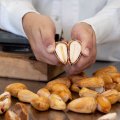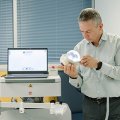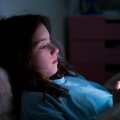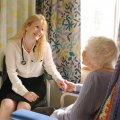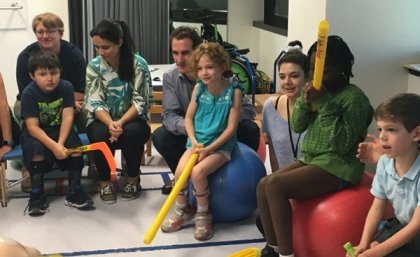
An eight-year-old boy with cerebral palsy hopes to be able to put on his socks by himself and stand at the kitchen bench to make his own lunch following a trial of intensive therapy this school holidays.
Sean Senbel-Lynch is one of 10 children with cerebral palsy who will take part in a University of Queensland camp at the Queensland Children’s Hospital (QCH).
The two-week trial aims to get children moving and performing tasks – without a therapist providing physical assistance – to improve their independence and promote changes in the brain.
UQ Child Health Research Centre (CHRC) researcher and QCH occupational therapist Dr Leanne Sakzewski said the camp would provide insight into treating brain function in bilateral cerebral palsy, which affects both sides of the body and brain.
“It’s important for us to understand if this therapy is effective for children with bilateral cerebral palsy, as these children often have difficulty achieving the skills they need to be independent,” Dr Sakzewski said.
“We already know that functional goal-directed training is effective in improving daily activity and mobility but this is normally delivered in a short, non-intensive model like physiotherapy for one hour per week.”
Four senior occupational therapists and physiotherapists will oversee the camp, with support from fourth-year students.
CHRC researcher Dr Sarah Reedman said the children would participate in arts and crafts, and play with board games and toys to develop their motor skills.
“A big part of this therapy is testing a non-contact approach,” Dr Reedman said.
“Every activity will be run according to the principle of neuroplasticity – how the brain learns best and most efficiently – by having the children perform the tasks themselves.
“If therapists provide too much physical assistance by steadying a child with their hands, we think it can reduce the amount of active learning happening in the brain.
“To cause neuroplastic changes to the brain, we need to have a high level of intensity over a prolonged period of time.”
Dr Sakzewski said functional magnetic resonance imaging (fMRI) would monitor how the brain responded to the large dose of therapy.
“The imaging shows the connectivity within the brain and whether these intensive activities promote changes.
“This therapy has been tested in children with other types of cerebral palsy but we will assess how effective it is for those who have damage to both sides of the brain.”
The camp is part of a multi-site Australian trial, with another three scheduled for Brisbane in coming years.
Media interested in attending the camp should arrive at Level 2 reception of the Queensland Children’s Hospital at 9am on Thursday 11 April.
Media: Faculty of Medicine Communications, med.media@uq.edu.au, +61 7 3365 5133, +61 436 368 746.


